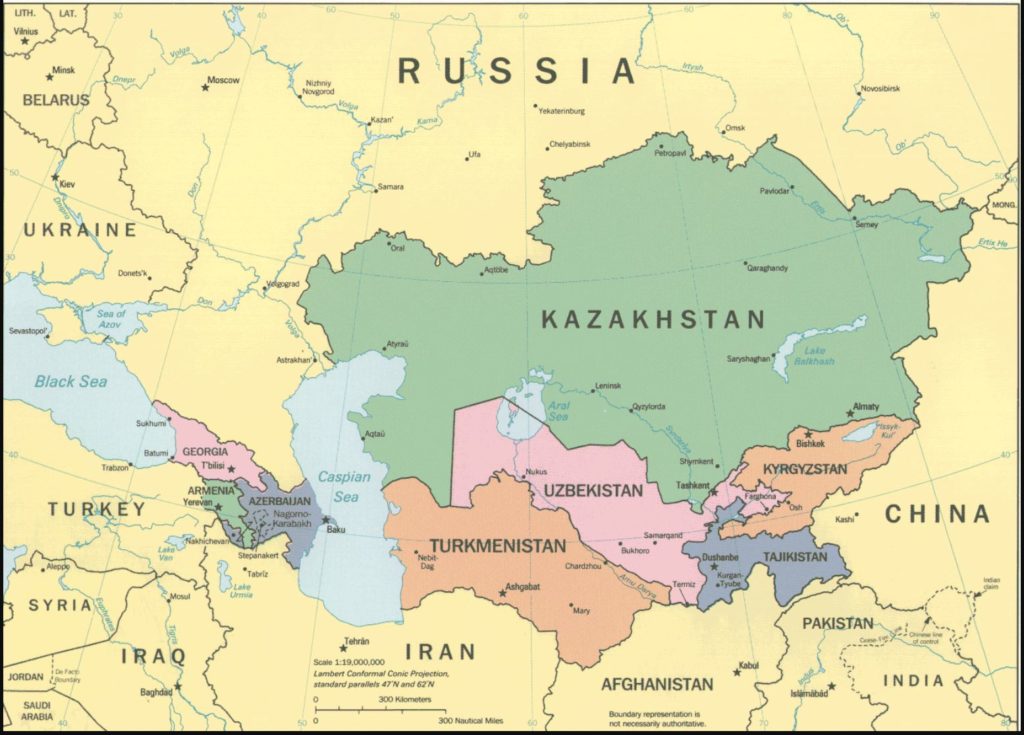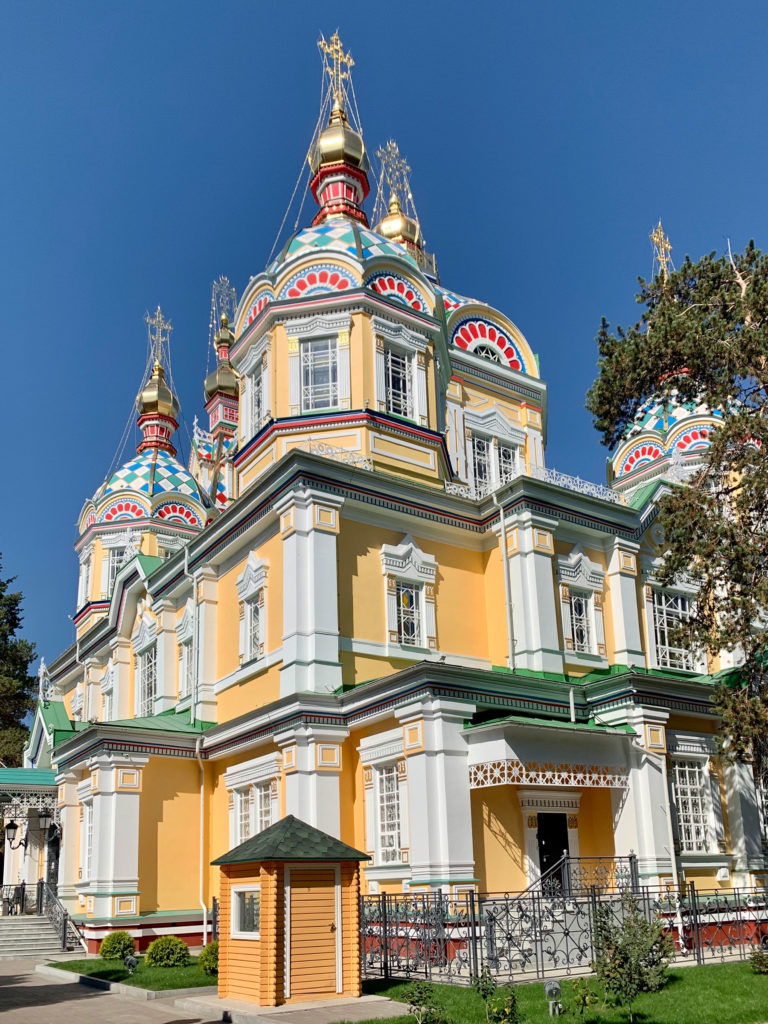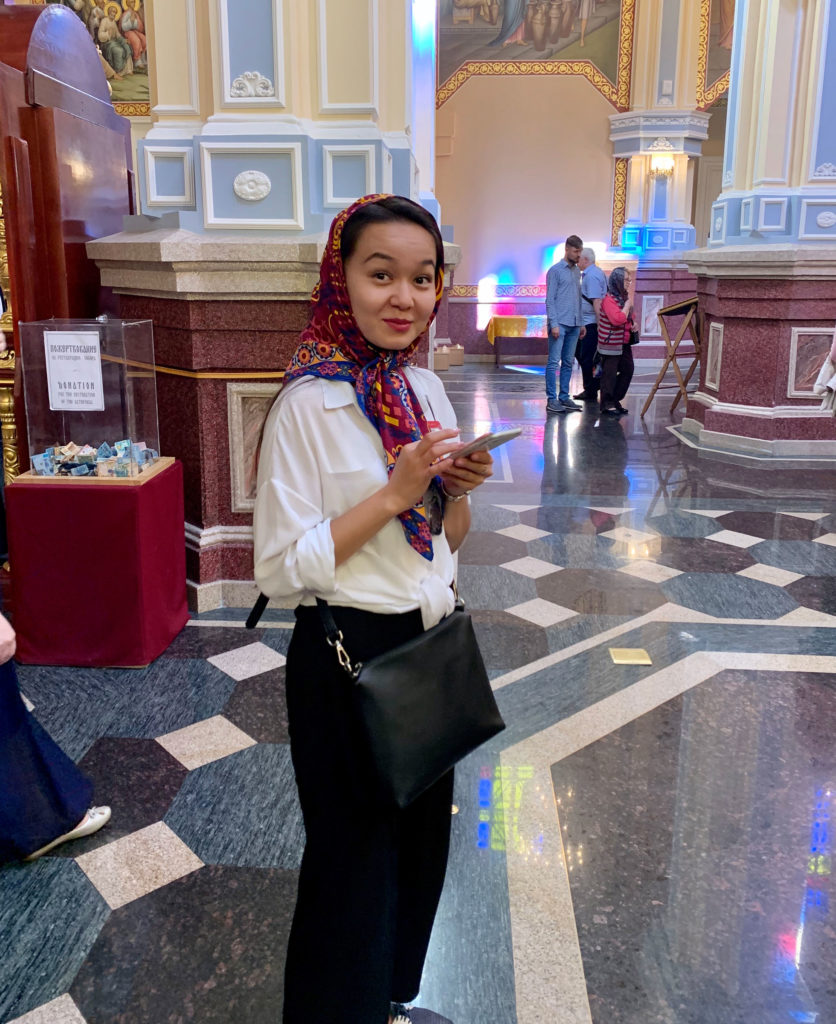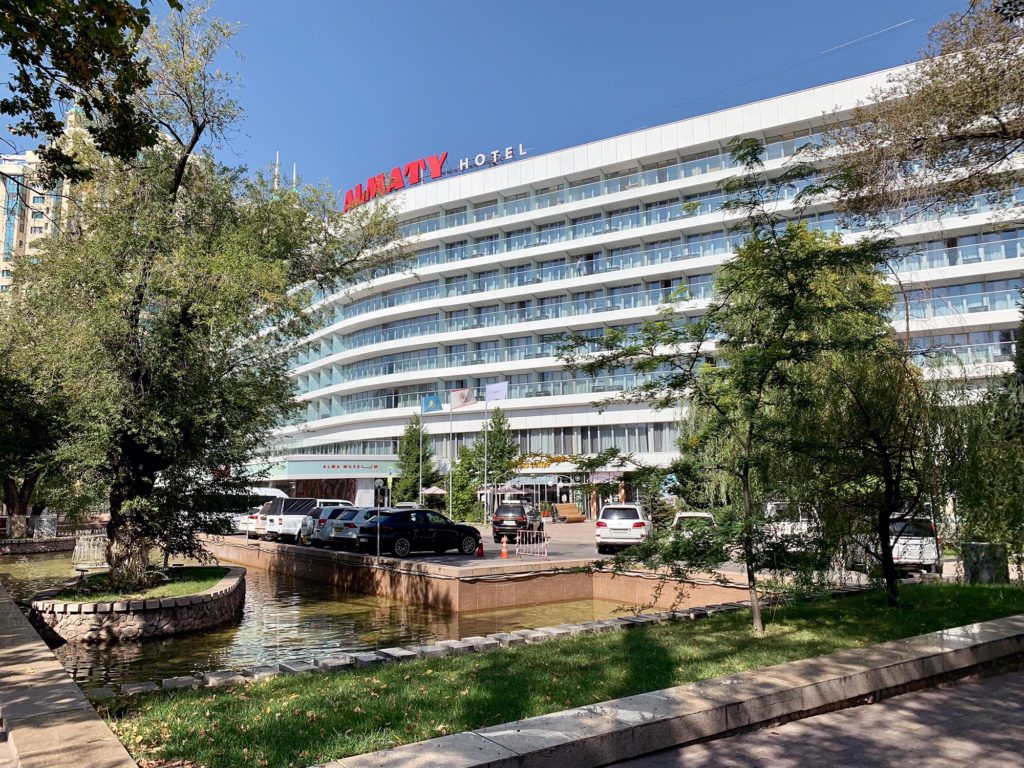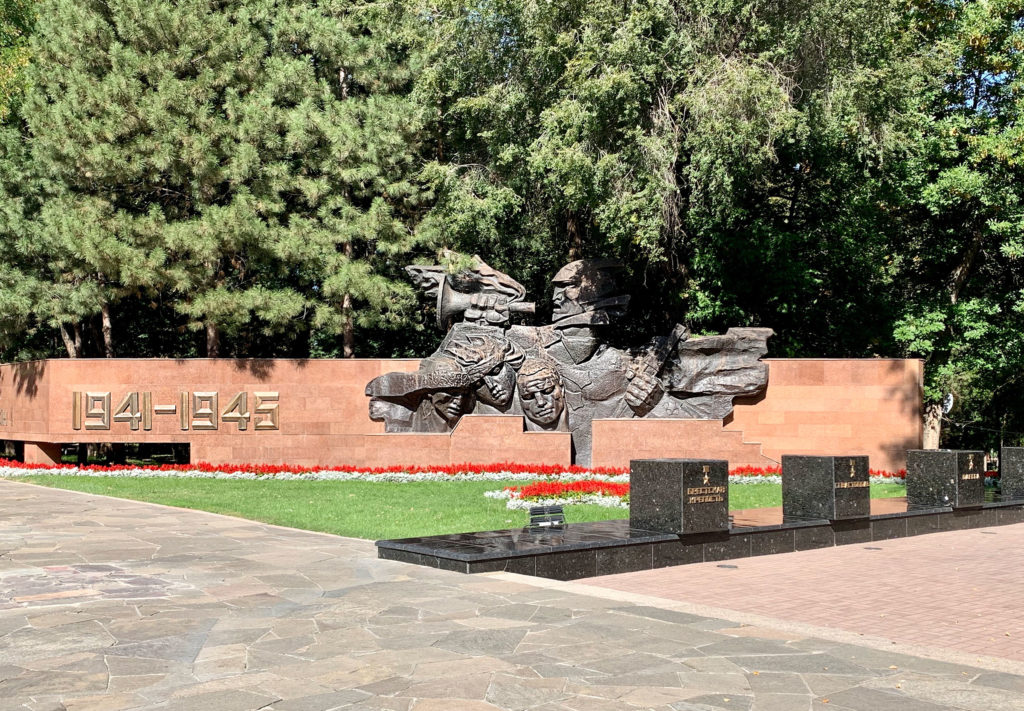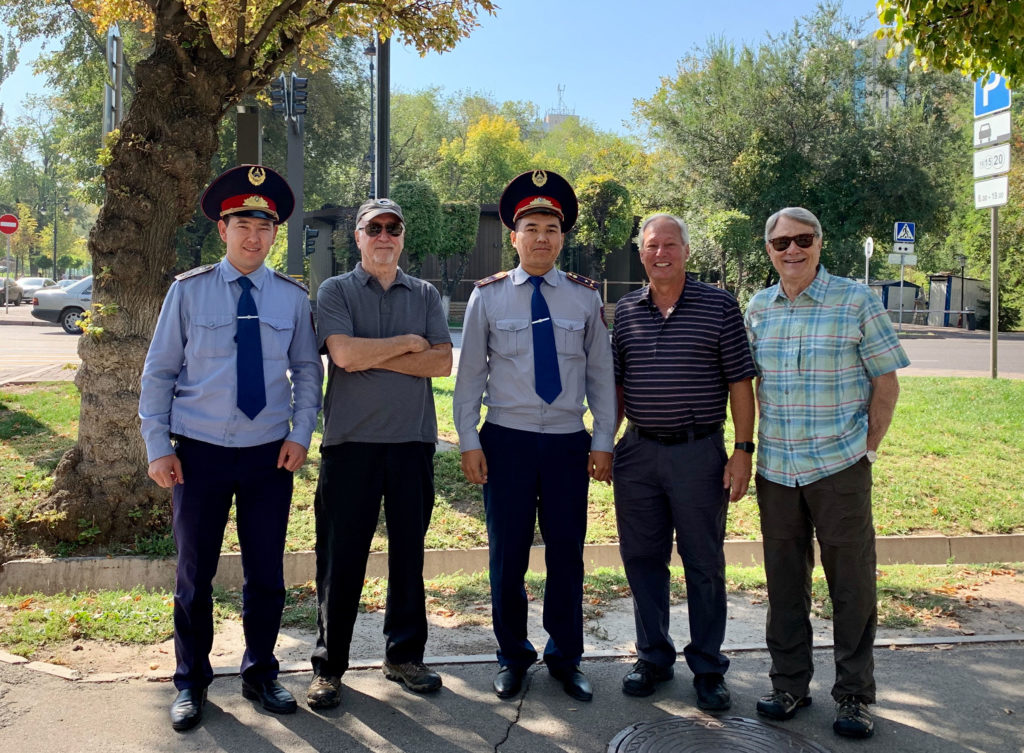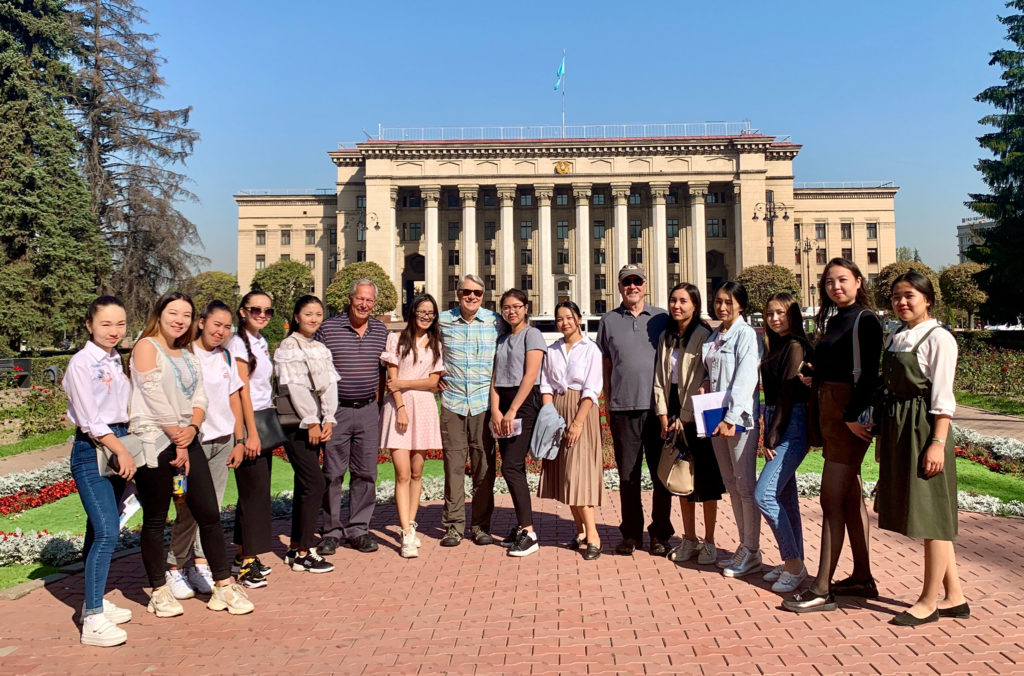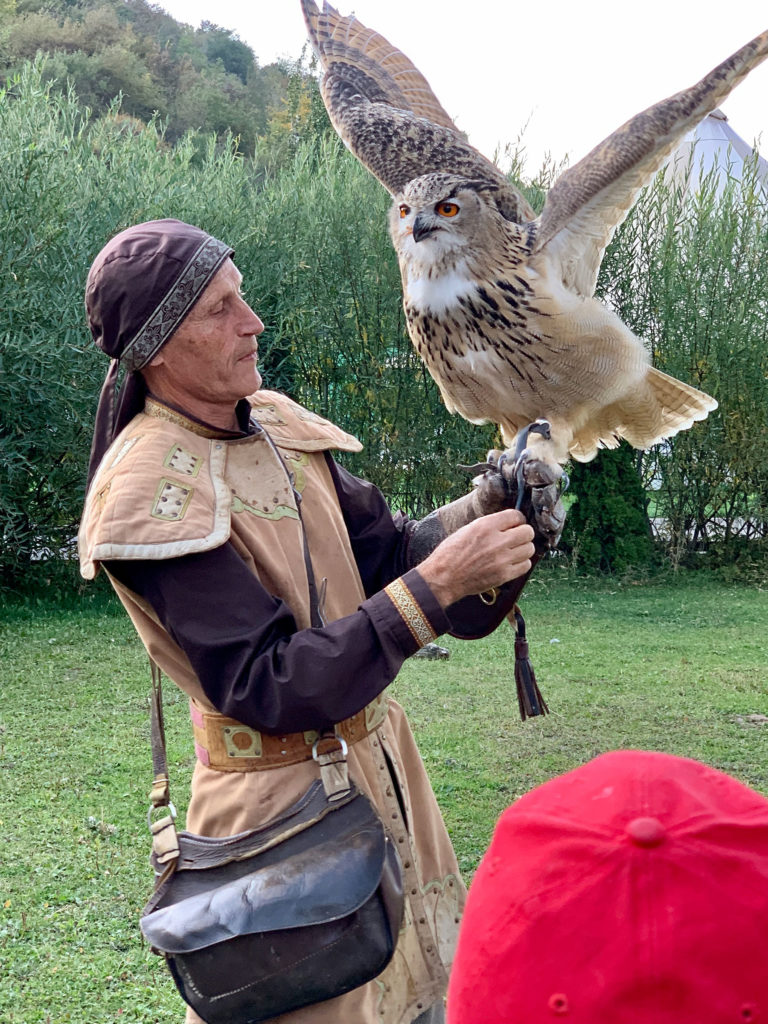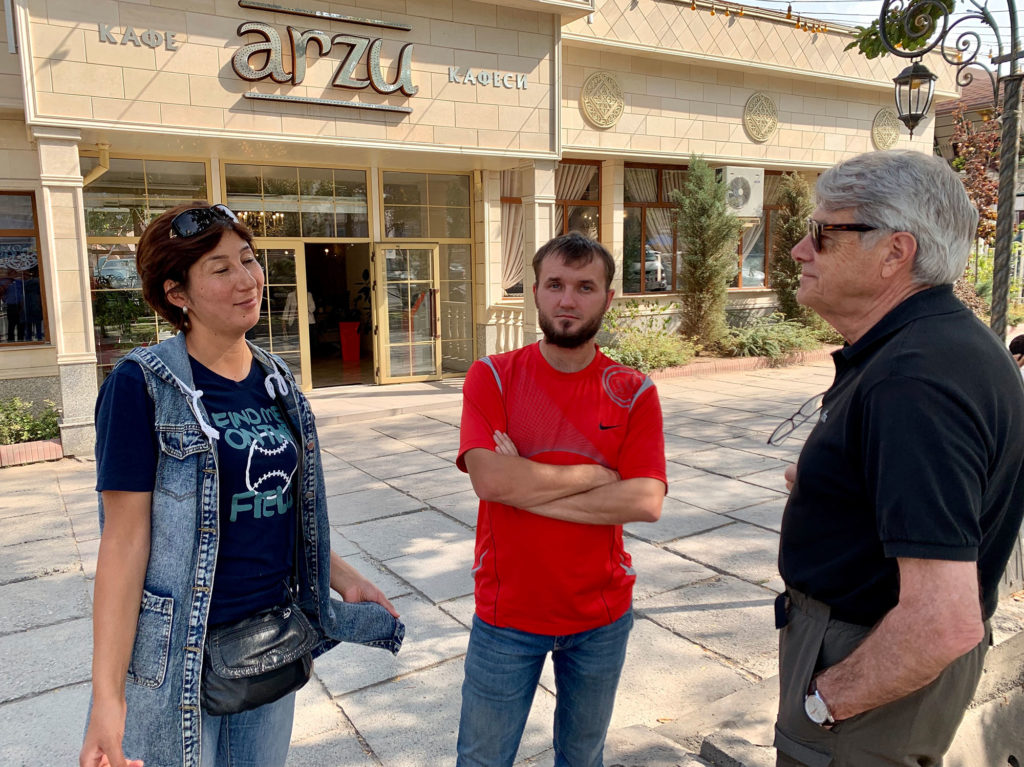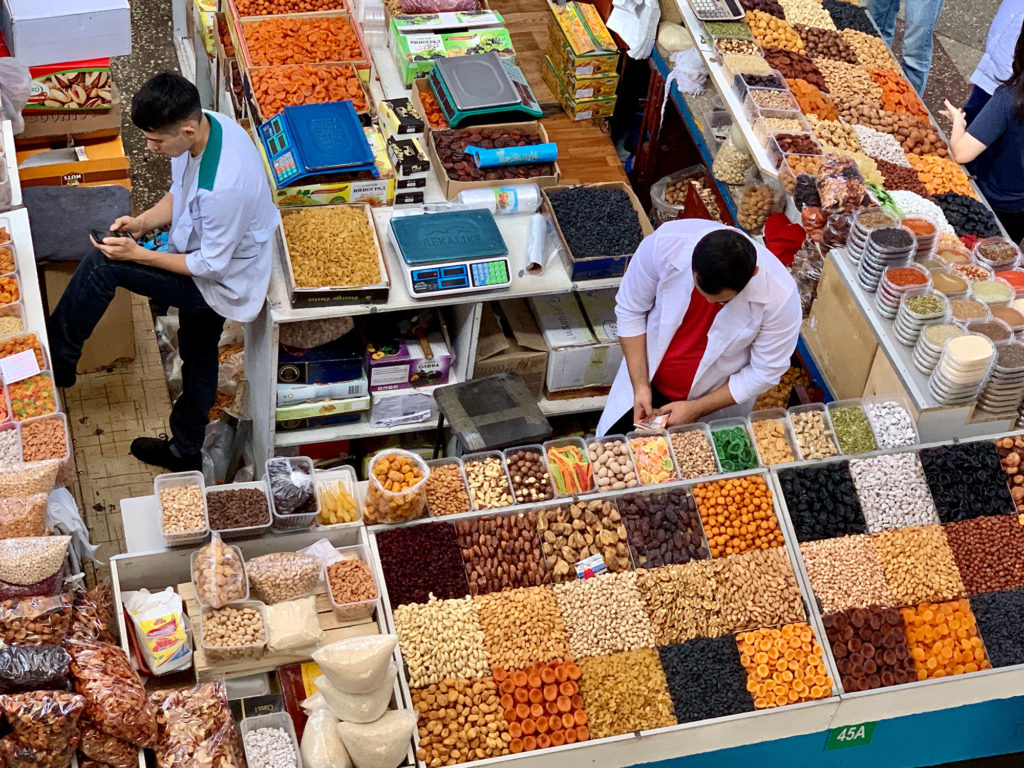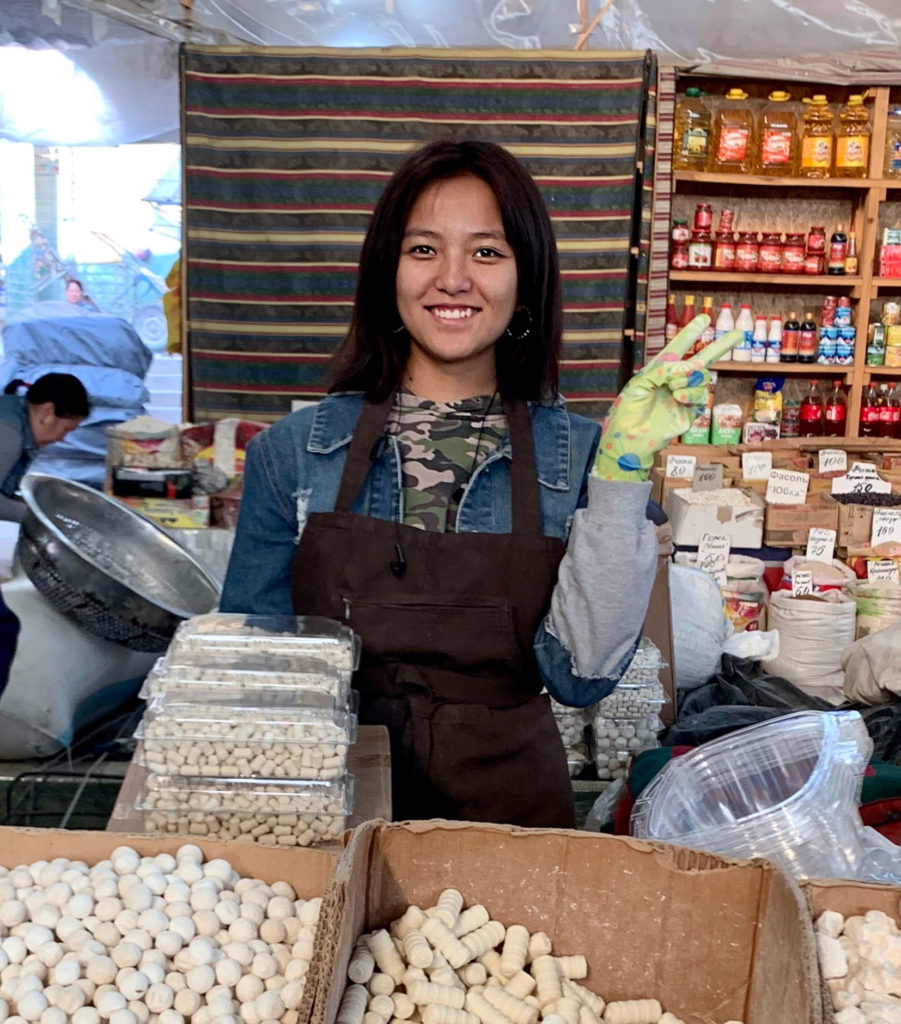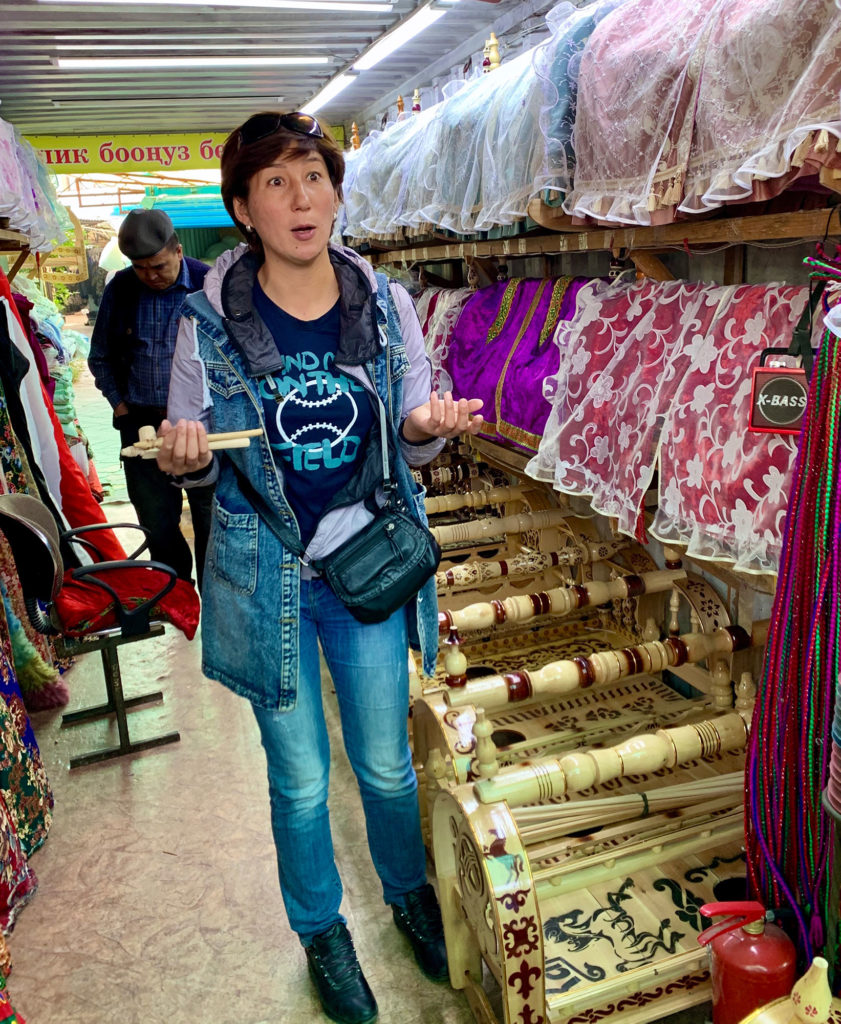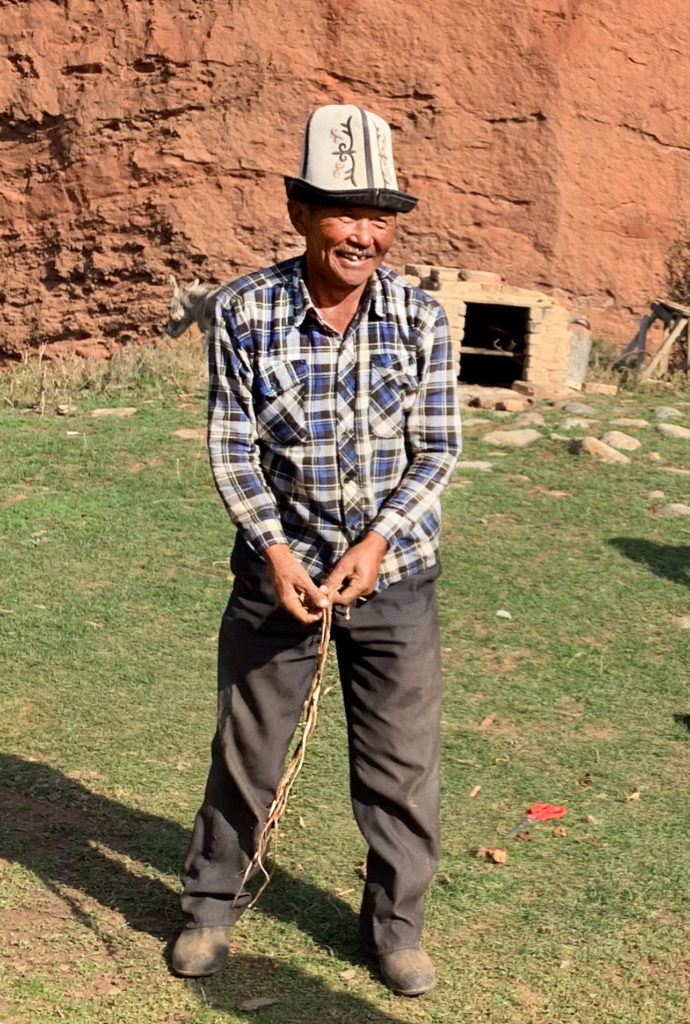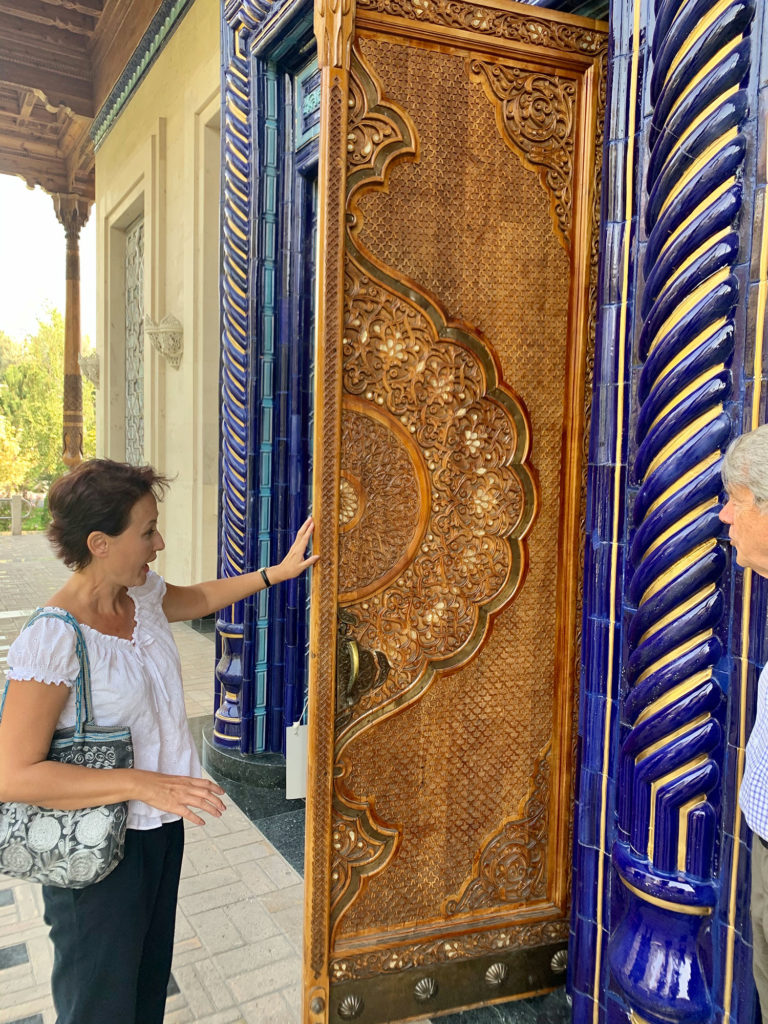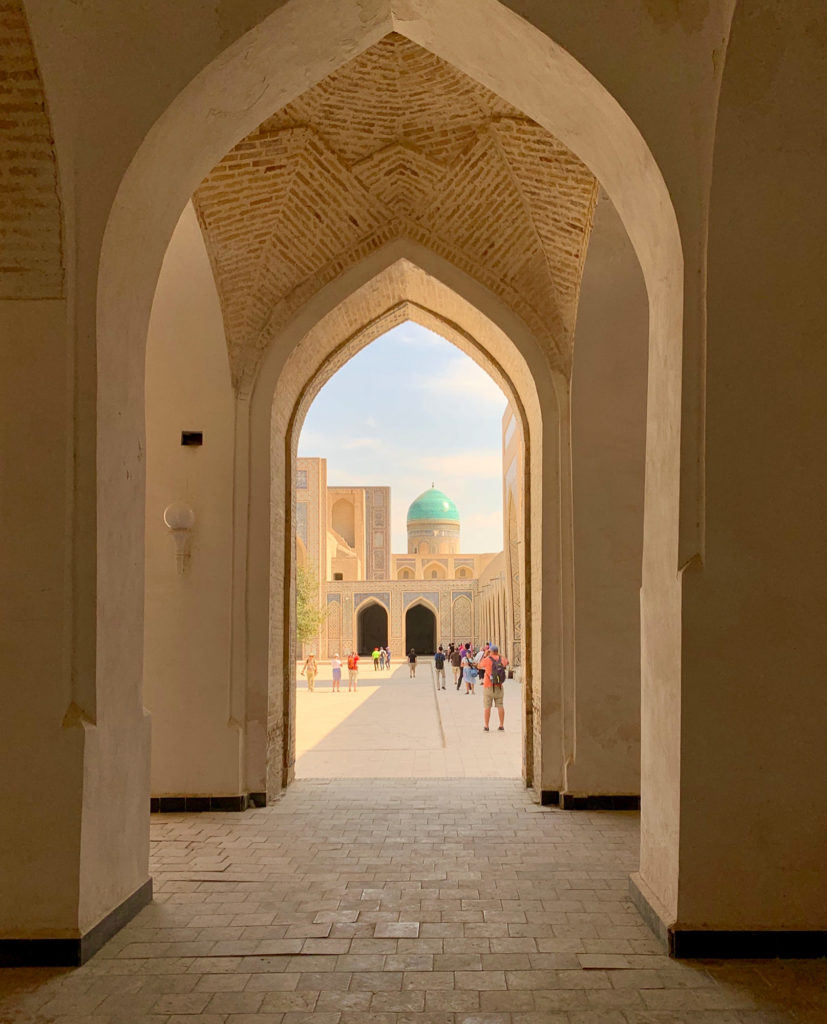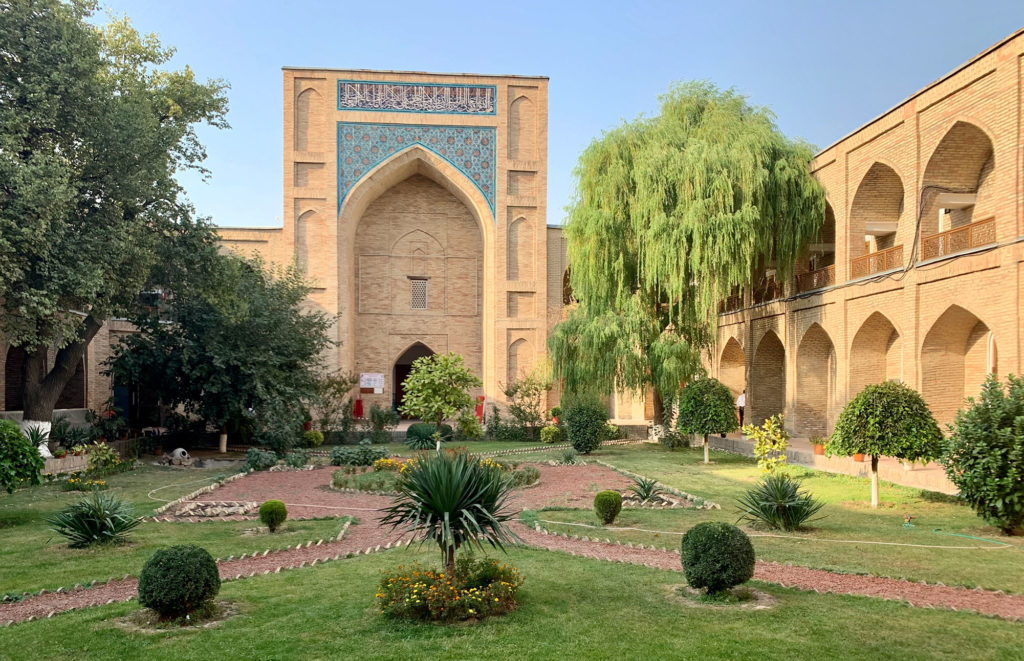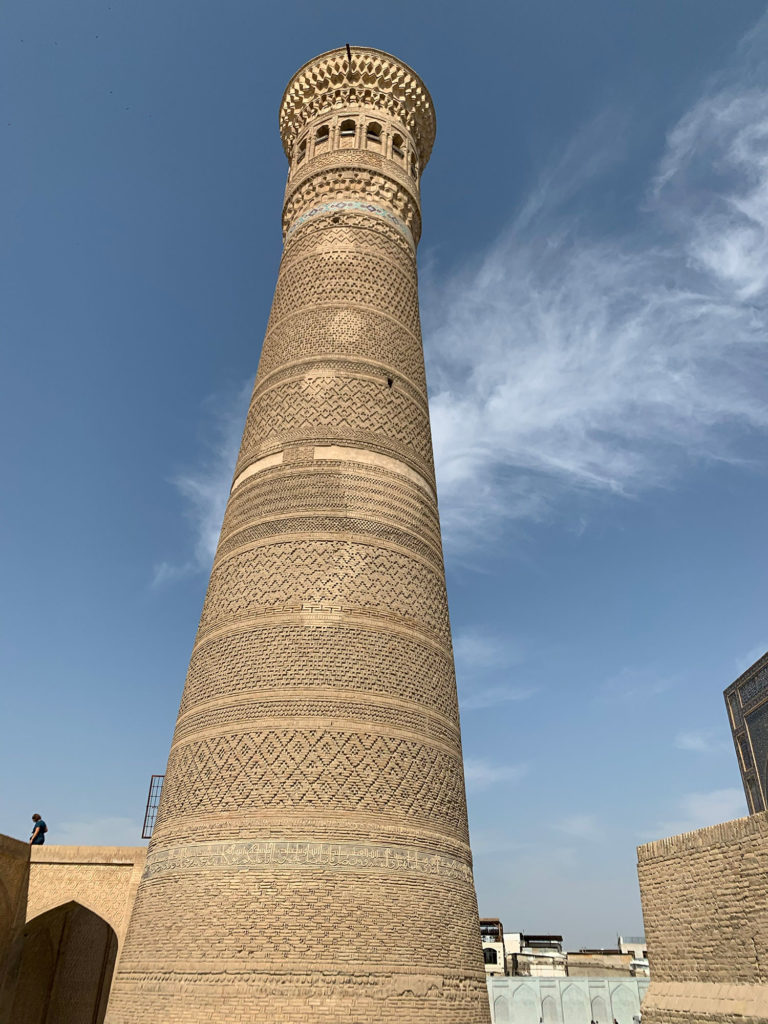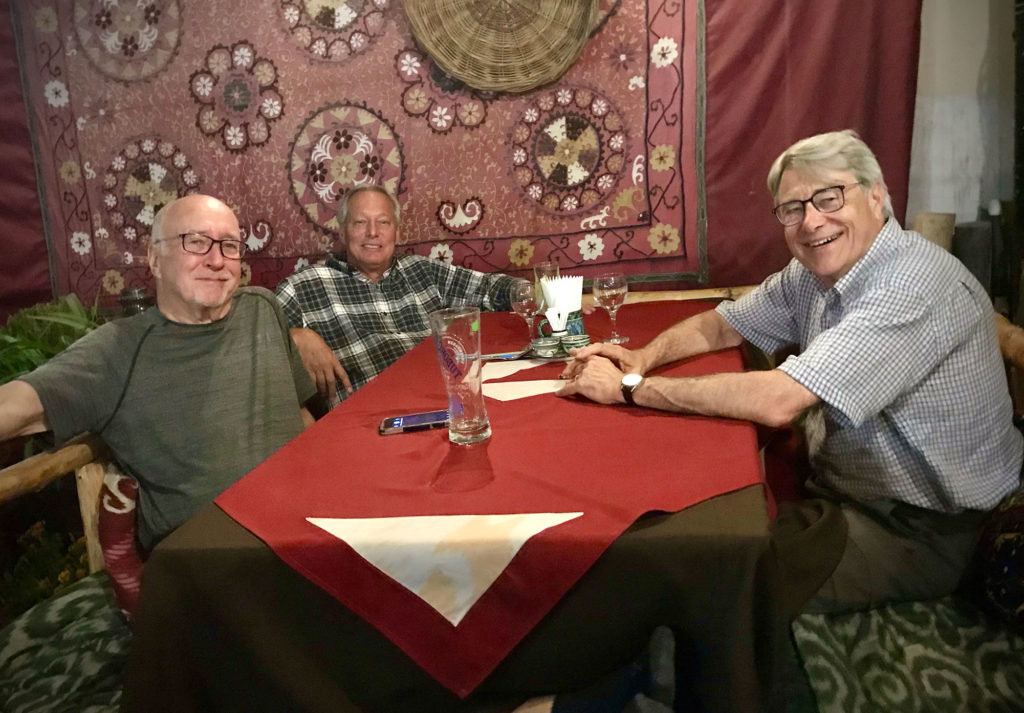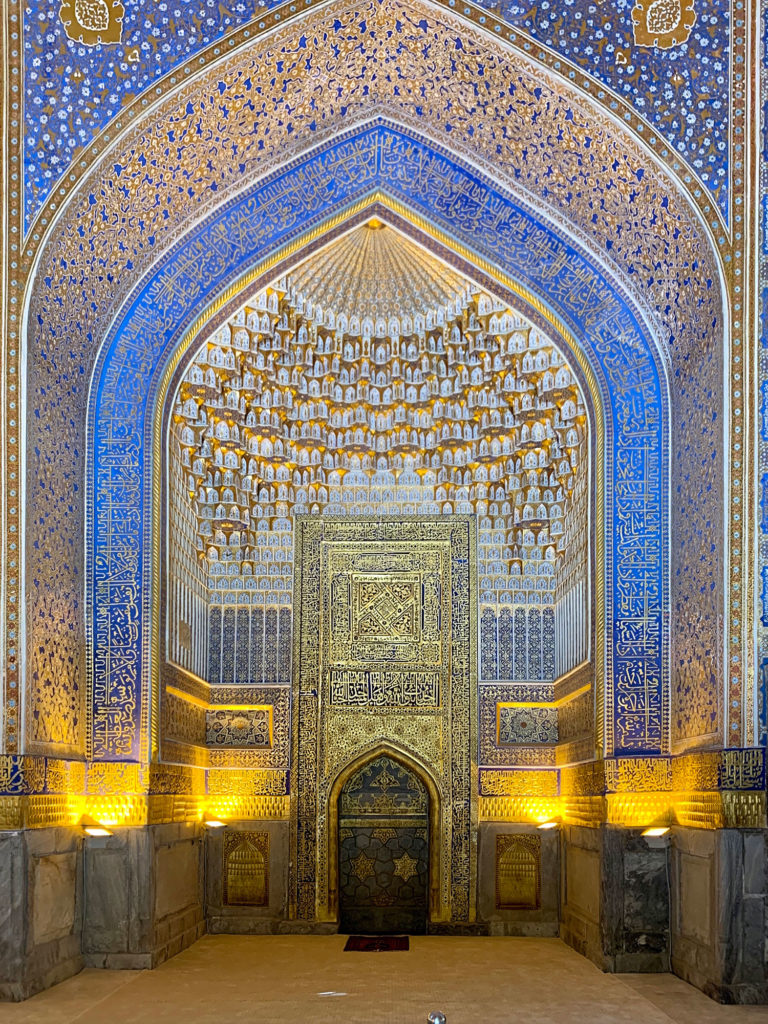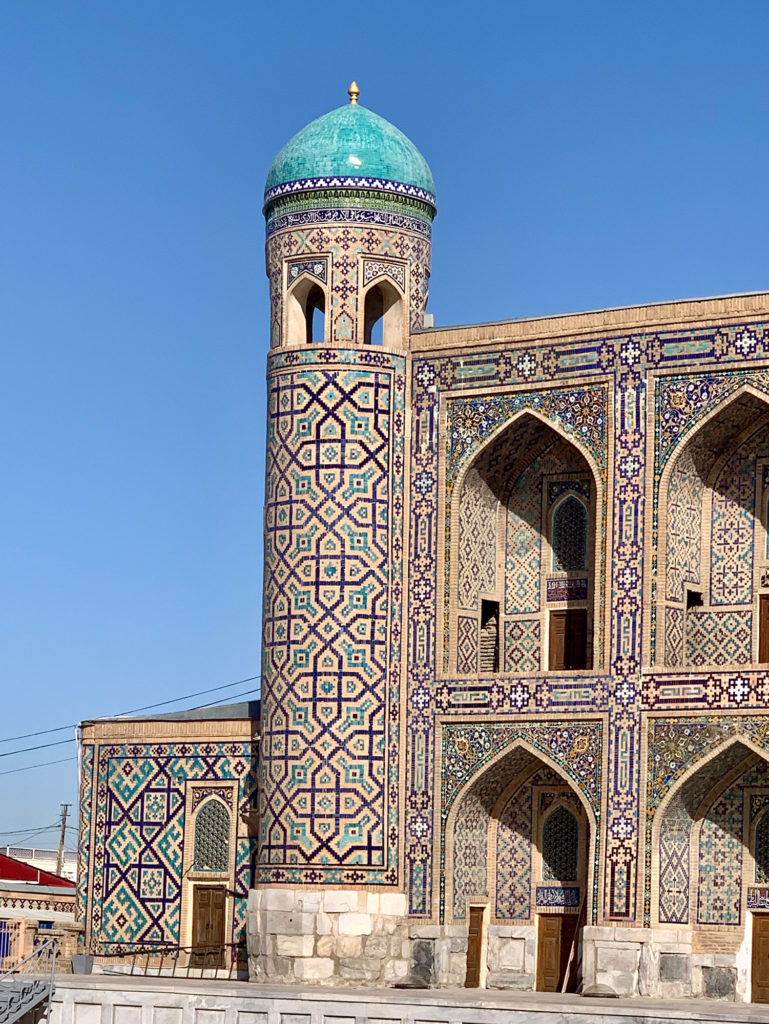In the vast and mysterious expanse between China, Russia, Afghanistan, and Iran lie the Stans—Kazakhstan, Kyrgyzstan, Tajikistan, Turkmenistan, and Uzbekistan. If you know anything about the area, it’s probably from a history class—it was a leg of the long and treacherous trek Marco Polo made from Venice to the court of Kublai Khan in China, along what became the Silk Road.
Reading about the Stans today conjures images of vast steppe grasslands, deserts, steep passes through snow-capped mountains, nomadic horsemen, yurts, …and fermented mare’s milk.
Perhaps it was the Stans’ remoteness and mystery that attracted my travel friends and me. Or maybe it was just the large blank space on our travel maps. Whatever the allure, Steve, Paul, and I chose them for a fall 2019 adventure.
Following our usual m. o., we divided assignments by countries, each responsible for choosing where to go, how to get there, lining up guides, making reservations, etc. And each quickly determined this area would be considerably more challenging than any we’d experienced.
There were complicated visa processes, Soviet-style bureaucracy, a high language barrier, illegible signs and writing, complex border crossings with no translations, black-market currency exchange, and limited credit card acceptance. They just weren’t used to seeing people like us. Which, of course, made it that much more attractive.
Flights were a scavenger hunt; moving a few hundred miles between cities could require flying 18-24 hours through Moscow or Istanbul. When there was a more direct flight or a train, it often went only once or twice a week, during part of the year, and subject to whimsical schedule changes. Where and when we went would be determined by where and when we could get. With uncharacteristic patience, we pieced together an itinerary and crossed our fingers that none of the flights would flake out.
After 26.5 hours of flying, Paul and I landed in Almaty, Kazakhstan. It was 12:10 am; Steve had arrived from Tokyo a few hours earlier. Our guide, Aidyam, introduced herself, was a good sport about the hour, led us to our van and driver, and dropped us at our hotel just before 2.
They were back long before we’d recovered; they had a long list of sights to show us.
“Ai” is a young, smart, and pretty Uighur Muslim—an ethnic group China has incarcerated in “re-education camps” in northwestern China, close to the Kazakh-China border. Xi Jinping’s 2017 directive that “religions in China must be Chinese in orientation” and “adapt themselves to socialist society” led to pervasive surveillance and imprisonment of a million Uighurs to “counter extremism.” Ai had relatives in those camps; tears came to her eyes as she described their plight.
Our guidebooks had led us to believe the Stans were largely undeveloped, with locals still living the horse and yurt lifestyle. We were prepared for remote wilderness and isolation. Seasoned travelers should know better.
Almaty is a lively contemporary city with large modern buildings, recent-model traffic, and all the excess signage of full-on commercialism. The reality of tourism is that the world is homogenizing. Except for the Cyrillic lettering, even remote Kazakhstan felt strangely familiar.
Our morning walking tour included all the requisite government buildings. Those built in the Soviet era, before Kazakhstan declared independence in 1991, were grand and imposing. Similarly, the many monuments were powerful, some to the point of menacing, conveying versions of Soviet history and values. The Soviets understood the power of art and architecture and used them skillfully to promote the official ideology.
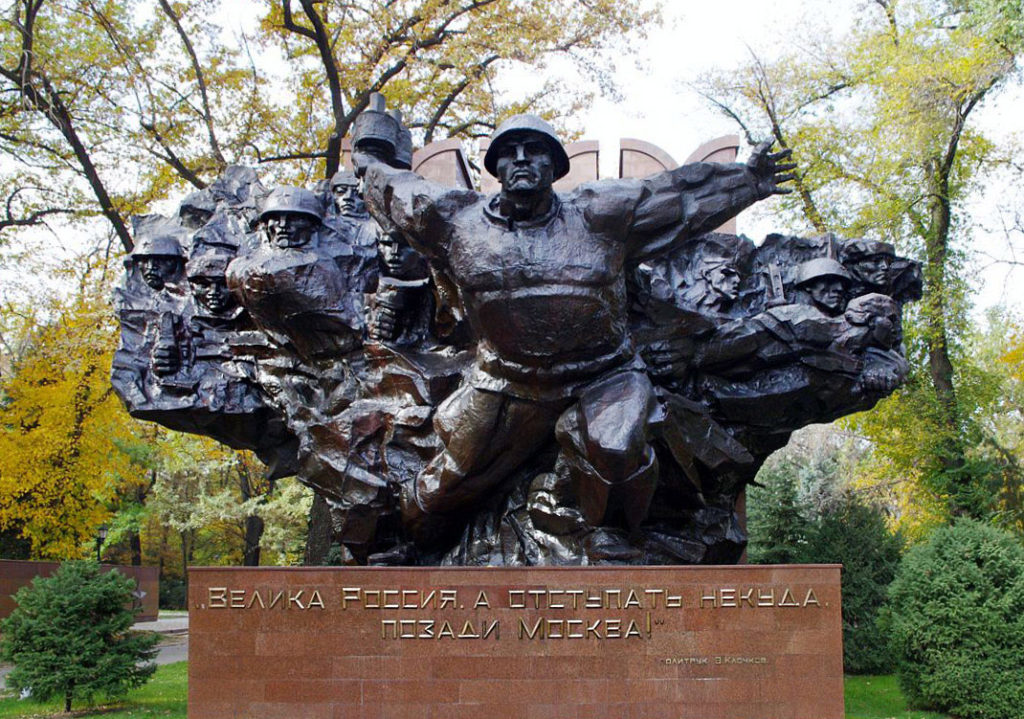
But the ubiquitous Soviet apartment buildings were gray, drab, square, and anonymous. The interpretation I couldn’t avoid was that the people were but small and insignificant cogs in the grand machinery of government and socialism.
When we approached the old parliament building, it was surrounded by hundreds of uniformed police, spaced a few feet apart. Ai asked them if a foreign dignitary was visiting; they didn’t know or seem to care, but they were intensely interested in where we were from. When she told them the US, they shook our hands, and asked to take pictures with us. It was an unexpectedly warm welcome. Had the Cold War become a warm glow? Or had it all been a fabrication the political elite foisted on an amiable populace?
We moved on a few blocks to the front of the opera house, where a gaggle of girls tried out their English on us and asked us to pose for pictures with them. We’d heard celebrity can get tiresome; we weren’t yet convinced.
All the while, Ai was taking pictures and deftly posting them to Facebook—only not in her native Kazakh or Russian; she wrote in English. It wasn’t for our benefit; English was the social media language of young Kazakhs.
One hour and 5,000 ft above Almaty lies Big Almaty Lake, a surreal, turquoise, deep-water reservoir between snow-capped mountains. Ai had anticipated the gorgeous sunny day and brought a picnic basket and a bottle of champagne. Her Muslim convictions meant we had to finish the champagne ourselves, and we had barely started when two boys from a nearby group brought their banner over for pictures with us. When we proved friendly, more came and our champagne got hot. Maybe this was the celebrity problem.
No trip to the Stans is complete without an exhibition of traditional hunting with hawks and eagles. As we waited for the show to begin, our driver, who had yet to speak a word of English to us, sat down on the long bench beside me and asked where I was from. He had never heard of Memphis but was moving to Chicago. I’d heard such plans many times before, but not on that side of the world. Before I could ask the obvious next question, he explained that his cousin was making a lot of money there as a truck driver.
I commented that there seemed to be plenty of work in Kazakhstan. He agreed—but he was making $6,000 per year and his cousin was making $66,000. The higher cost of living argument went nowhere; he’d done the calculations and was saving for the trip. I didn’t bother to ask about a visa; entry options abound, many of which don’t involve visas.
Ai loves to travel and, for her young age, had seen many countries. I invited her to the US to meet my youngest son, Lee. Clearly that piqued her interest as she brought it up several times. (I promoted the idea with Lee but he politely took no action; he was in a new relationship —something a parent is always last to know.)
Late in the afternoon Ai and our soon-to-be-compatriot driver dropped us at the Kyrgystan border and we exchanged contact information.
Ai and I are friends on Facebook, exchange messages occasionally, and she promises to visit. Maybe our driver and I will pass on the highway.
Across the border, our Kyrgyzstan guide and driver were waiting.
Kyrgyzstan is the “Switzerland of Central Asia”—more than half the country is above 8,000 ft, and only about an eighth below 5,000 ft. Most of its 6 million people live in highland pastures between snow-capped peaks; it’s pristine terrain, with rushing mountain streams, crystal clear lakes, and an abundance of flora and fauna.
We spent a morning in Bishkek’s Old Osh Bazaar, sampling foods and spices, admiring local crafts, and trying traditional Kyrgyz musical instruments.
In the afternoon we embarked on a 3-day tour around the alpine Issyk Kul Lake. As we rode, we gathered our guide’s story. She grew up on a farm at the remote, rural end of the lake, married her childhood sweetheart, and had three children. They owned a 50-acre farm next to her parents’ and released their small herd of cattle and sheep into the mountains each spring to be retrieved in the fall. It was a fairytale life in a natural wonderland—until he became alcoholic and stopped working.
When the situation became untenable, she threw him out. Within a few weeks, several local merchants came to her with his overdue bills. Suddenly she found herself not just a single mother with three young kids and a farm to tend, but also deeply in debt.
After much crying, she vowed to somehow make it work. She hired a farm hand, polished her English, and offered her services as a guide. Her parents watched the kids during her weeklong trips, and she called home every night. In a year and a half, she had paid back her husband’s debts, restored her reputation in the small community, and was slowly adding cattle and sheep. She hoped in a few years the farm and herd would be enough to support her family so she could live with them fulltime.
When we spent a night at her end of the lake, she stayed at home with her children. As she left in the morning, both she and the 7-year-old cried.
While hiking to a lookout point over a scenic valley, we came across a family of nomadic hunters. They were amiable, agreeing to pictures and conversation, so we spent a little time with them.
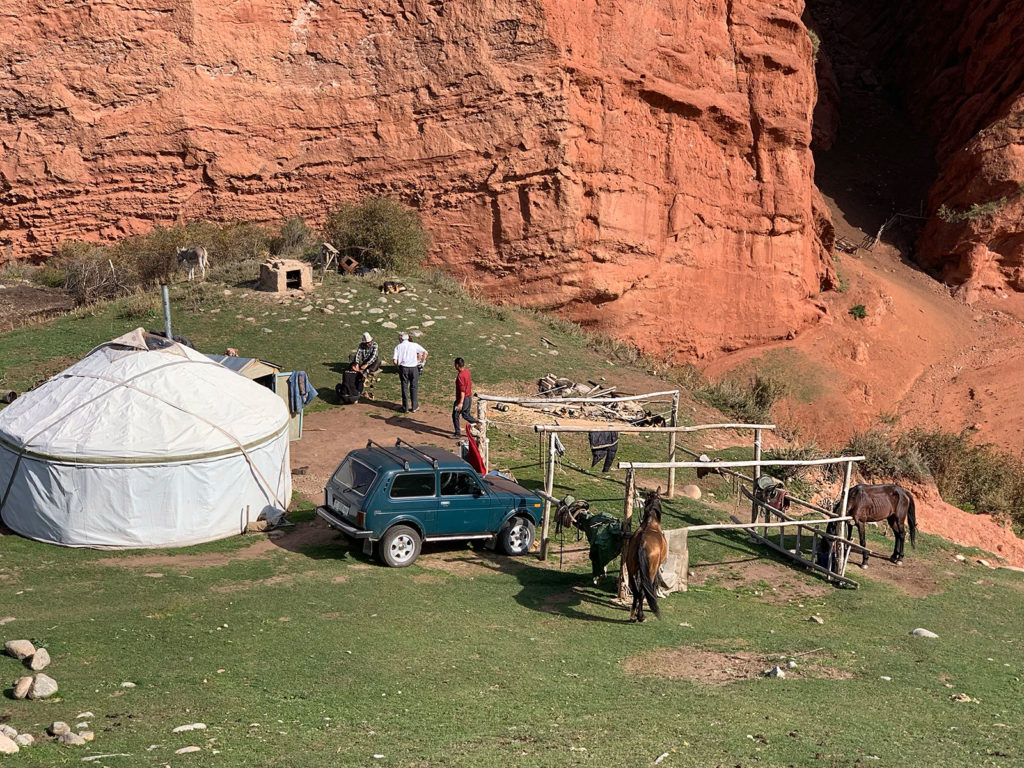
Every summer, the father and son hunt ibex (large mountain goats with curved horns) and fox in the wilderness above the camp, as high as 12,000 ft. They hunt on horseback but gave in to the modern luxury of a 4-wheel drive SUV for trips to town. In winter, they pack up the yurt for lower ground.
When our guide told them we were from the US, they asked if we had brought a skinning knife—perhaps hard to get there. We explained we weren’t hunters but offered to send them one. Our guide reminded us they had no address.
We were careful to complete our circle of the lake in time for our evening flight from Bishkek—a few minutes late would have meant four days late to Uzbekistan.
Of all the Stans, Uzbekistan has preserved the most of its history, including especially awe-inspiring portions of great cities along the legendary Silk Road.
Our Uzbek guide was middle-aged, stylishly dressed, impeccably made-up, chronically late, and went by the western name “Lola.” She knew every expensive restaurant, fancy clothing store, and exclusive jeweler. She was the woman I warned my sons about.
But as a guide, she had advantages—she stepped boldly in front of every crowd, finagled her way to the front of every line, and knew all the backdoors and private parking places.
Our four-day trek from Tashkent through Bukhara, Shahrisabz, and Samarkand included countless ancient madrassas (Islamic schools), ornate mosques, tall minarets, turquoise tiled domes, and ancient outdoor bazaars. Most structures had been damaged or razed in incessant bloody wars, some with invaders like Genghis Khan, others with more local and recurrent enemies, but were rebuilt in all their intricate detail.
Wandering through portions of the ancient cities, it’s easy to imagine a 15th-century traveling merchant making his way through the narrow winding lanes, negotiating in the noisy open-air markets, arranging a room with an innkeeper, and praying for safe passage to the next town.
While we were eating lunch in a busy Tashkent cafeteria, two Uzbek girls in an adjoining booth wanted to talk. They were university students, studying sociology and political science. After the usual pictures, we exchanged email addresses, and occasionally compare thoughts on US and Uzbek politics.
Paul has an aptitude for uncovering good food and music in remote corners of the world, and he got a tip on a restaurant in Tashkent. It was so deep in a dark neighborhood on the other side of town, I feared the cabdriver was kidnapping us.
Caravan is a small restaurant with a cozy homelike setting and rooms stuffed with Central Asian art. A friendly waiter with a little English helped us choose unfamiliar dishes from an illegible menu. The food was excellent, but the band was the highlight.
Four guys played: a 2-string, long-neck, twangy dutor; a doira hand drum; a violin played vertically on the lap; and an electronic keyboard. We recognized only a couple of the songs but enjoyed them all, stayed late, and bought the CD.
Stans Reflections: We’re More Alike Than Different
The three countries share common borders, but their histories and terrains have given them distinct personalities. Kyrgyzstan’s altitude and natural setting provide a rural charm and a traditional lifestyle. Uzbekistan’s location on the world’s longest and most famous trade route brought it wealth and exchange of ideas. Kazakhstan’s abundant oil and mineral resources have created modern development and a contemporary lifestyle.
But all three share affability and hospitality of the people. They are among the friendliest and most welcoming people we’ve found anywhere in the world.
Differences are what makes travel and cultural interactions interesting. Distant peoples speak different languages, wear different clothes, eat different foods, practice different manners, worship different gods, and create different art, architecture, and music. The differences open our minds and challenge us to think… about our own habits and traditions, how different our lives could (or should) be, and wonder if there might be a better way.
But travel eventually reveals that most of those differences are superficial. They are cultural differences and not the essence of a people. They’re the customs of the time and place in which we are born and live—reflections of history and inherited habits, not chosen by us, but rather dictated by the environment we find ourselves in.
Beneath them lies the foundation of humanity—our innate needs, motivations, fears, and desires. When we deep enough, we find we’re not as different as we seem.
But the opportunity to get below the surface and explore what humanity we share doesn’t happen often in distant cultures. Short encounters aren’t enough; we need multiple days together. And we need a common language—not just enough to communicate basic needs, but a fluency that allows sharing of feelings, goals, motivations, and challenges.
One of the rare occasions those circumstances come together is exploring a country with a fluent guide over several days or more.
On the other side of the world we found:
- A single mother in Kyrgyzstan who works long and hard to build a home and provide for her children. It’s a story lived daily by single mothers in the US and every country of the world.
- An unmarried girl in Kazakhstan whose social life takes center stage and who is seldom separated from social media. It’s an addiction that plagues and amuses the young (and old) everywhere. She’d be an easy and popular addition to a social circle anywhere she knows the language.
- A status conscious lady in Uzbekistan with lots of ladders to climb. We can predict the ladders she’d climb in the US—and that she’d easily find admirers to appreciate her fashion and style.
- A young man in Kazakhstan intensely focused on earning a living, even if it means moving to the opposite side of the world. In the US we rarely need to change countries, but we make similar sacrifices in prolonged education and training, and often change cities for better opportunity.
- A populace eager to meet foreigners, converse, and learn about their cultures. And that’s why we were there.
Yes, we’re different—in clothes, foods, language, art, music, customs, histories, beliefs, and habits. But we’re not different in our humanity. That we share with people the world over.

